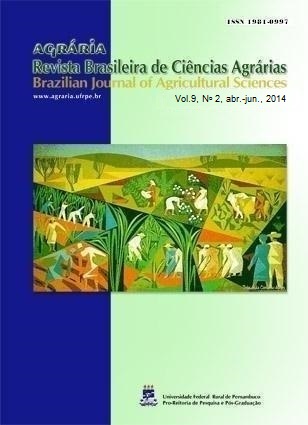Respiratory activity as a vigor test for cotton seed
DOI:
https://doi.org/10.5039/agraria.v9i2a3518Keywords:
quality control, Gossypium hirsutum L., physiological quality, Pettenkofer testAbstract
A high number of vigor tests are currently used by seed companies to evaluate the quality of seed lots. However, some of them do not always correlate with seedling performance in the field and in addition there is the disadvantage of long time interval to obtain the results. This study aimed to evaluate the efficiency of respiratory activity as a vigor test in cotton seeds. The experiments were conducted in 2012 in the laboratory and in a greenhouse. The seed of the cultivar BRS 286 was used. From the principal seed lot, three seed lots were obtained by accelerated aging for periods of zero, 48 and 96 hours. Besides the determination of respiratory activity, seed germination, seedling emergence in sand, emergence speed index, shoot and root length, dry mass of shoots and roots and electrical conductivity tests were performed. The respiratory activity classified the seed lots into three vigor levels, and was positively correlated with shoot and root length. The assessment of respiratory activity is effective as a vigor test for cotton seed.
Downloads
Downloads
Published
How to Cite
Issue
Section
License

This work is licensed under a Creative Commons Attribution-NonCommercial 3.0 Unported License.


